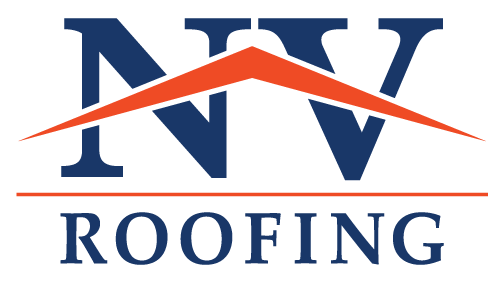Here in the Mid-Atlantic region, we can see some big swings in winter temperatures from night to day and day to day. While that can be a nuisance as far as figuring out what to wear each day, it can be downright dangerous to the health and stability of your roof.
That’s because those big swings in temperature are responsible for the freeze-thaw cycle. The warmer temperatures during the day, combined with sunshine, can cause snow on your roof to melt and flow toward your gutters.
But if there is a substantial snow cover on your roof, only the lower layer melts. And when temperatures drop, that water can freeze when it gets to a colder area near your gutters, causing what’s known as an ice dam. When the cycle starts all over, and more water melts, it has nowhere to go because of the solid ice dam. So, it flows into any cracks and crevices in your roof.
And if the shingles are all wet with snow melt or rain and the temperature plummets below freezing in a flash freeze, the ice can expand and damage your shingles and flashing.
Signs of Freeze-Thaw Cycle Roof Damage
Most of us don’t make a habit of looking up at our roof, but it’s actually a good habit to get into. You can look up from your front or backyard and from across the street if you use binoculars. You can also ask a friendly next-door neighbor if you can check out your roof from the second story of their home.
You can spot small problems before they become big ones. Here are some signs of roof damage caused by the freeze-thaw cycle:
Uneven Spacing Between Shingles
Your shingles should be evenly spaced. If you see that your shingles seem to be close together, they may have moved from the expansion of ice followed by the contraction of melting.
Loose Flashing
Flashing is the metal sheeting around your chimney, vents, and in valleys where two areas of your roof meet. If the flashing is loose, it will appear displaced and may make noise when the wind blows. The likely culprit is an ice dam. It’s important to repair loose flashing right away to prevent water from getting into your roofing materials and causing big problems.
Mold and Mildew
Winter roof damage can allow mold and mildew to grow under your shingles and infiltrate your attic. If you have easy access to your attic, check the ceiling and beams periodically for signs of mold or mildew.
Prevent Winter Roof Damage
It’s too late to prevent damage that occurred this winter, but you can take steps to prevent it from happening next winter. The best way to do that is to ensure you have adequate attic ventilation. Uneven roof heating is often the culprit behind ice dams.
Contact a reputable roofing contractor to inspect your roof for winter damage, and make repairs as necessary. Ask that they also inspect your attic for signs of problems. If your home has inadequate attic ventilation, that can be remedied during roof replacement.
And next winter, if we have heavy snow, you can help prevent ice dams by using a roof rake to remove snow from your roof.
